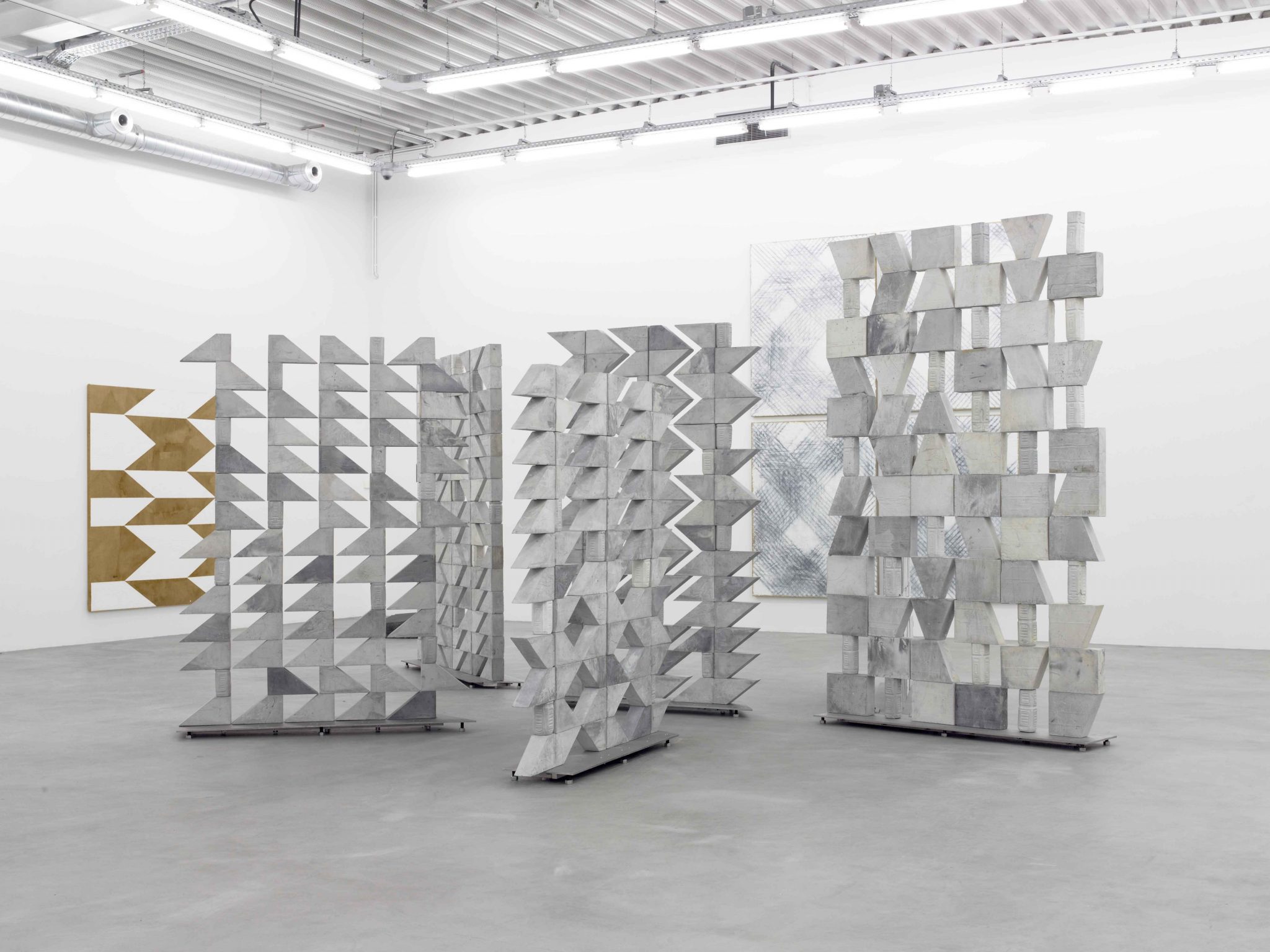Almine Rech’s Brussels gallery is housed in an imposing industrial 800m2 space that must present exhibiting artists with quite a challenge. Its vastness could inspire huge and site-specific work, yet in the three years since Rech opened here, few artists have responded in that way. Los Angeles-based Mark Hagen does so, however, and rather convincingly. Walking first through the smaller exhibition space, one sees a monumental space underneath, accessible by a staircase. Hagen emphasises this difference in level by making a self-supporting construction in metal space frames – structures formed by interlocking struts – that forms an L-shape, jutting out from the first-floor space and meeting the wall of the lower main space at an angle. The construction, with its open and closed structure, also slightly disrupts the general overview you’d normally have from above.
Space frames in the shapes of cubicles recur throughout the exhibition, functioning as autonomous sculptures but sometimes also as pedestals and room dividers. In their attempt to suggest a nomadic way of living via modular structures, they evoke the 1960s utopian architectures of Yona Friedman et al. On top of the frames, or in front of them like door stops, the artist has placed volcanic glass boulders, polished to a slick, mirrorlike finish. This obsidian has almost become an anachronistic material, associated with prehistory and long since replaced by materials easier to handle. Hence its obsoleteness contrasts with the space frames, which recall utopia but have now been put into industrial production.
The cement screenlike sculptures further along also have a somewhat prehistoric feel, almost recalling Aztec architecture. They are formed by stacking repeated volumes that look abstract, yet are revealed on closer inspection to be cast from postal packages and soft drink bottles. Some look like marble, yet they are made from the high-quality cement normally used for LA highways. Here as elsewhere, Hagen plays with his material’s origin and history, and deliberately injects temporal confusion by its almost anachronistic look.
The shape of the accumulated cement blocks is also echoed in the paintings in this show. With their white geometrical angles, they initially resemble Minimalism. Yet they are the result of a deliberate reversal of the traditional painting process: Hagen used burlap (for its rough, tactile quality), covered parts of its verso with adhesive tape, then poured acrylic paint through from the rear. The covered areas remain blank; the uncovered ones absorb the paint, hence playing with negative space. Within the fixed framework he set up to make these works, Hagen also allows for accidents. Some of the surfaces display the imprint of a rock used as a support; others show traces of tape. Hence the creation process is inscribed in the final product. Hagen’s new ‘cast tile’ paintings, where he uses plastic tiles, plastic sheeting and packing tape as foundations, are a variation of this technique. The poured paint on the backside of the burlap sheets is also squeegeed, creating blue colour gradations that loosely recall those of the volcanic glass.
Though referring to the legacy of Minimalism and Postminimalism, Hagen reconsiders and opens up this tradition by applying unusual materials that are not slick but possess a strong sense of physicality. His work might be set up according to related principles of repetition and variation, yet it also embraces the notion of coincidence and accident. The result is a series of multilayered works that proudly bear traces from their process of creation.
